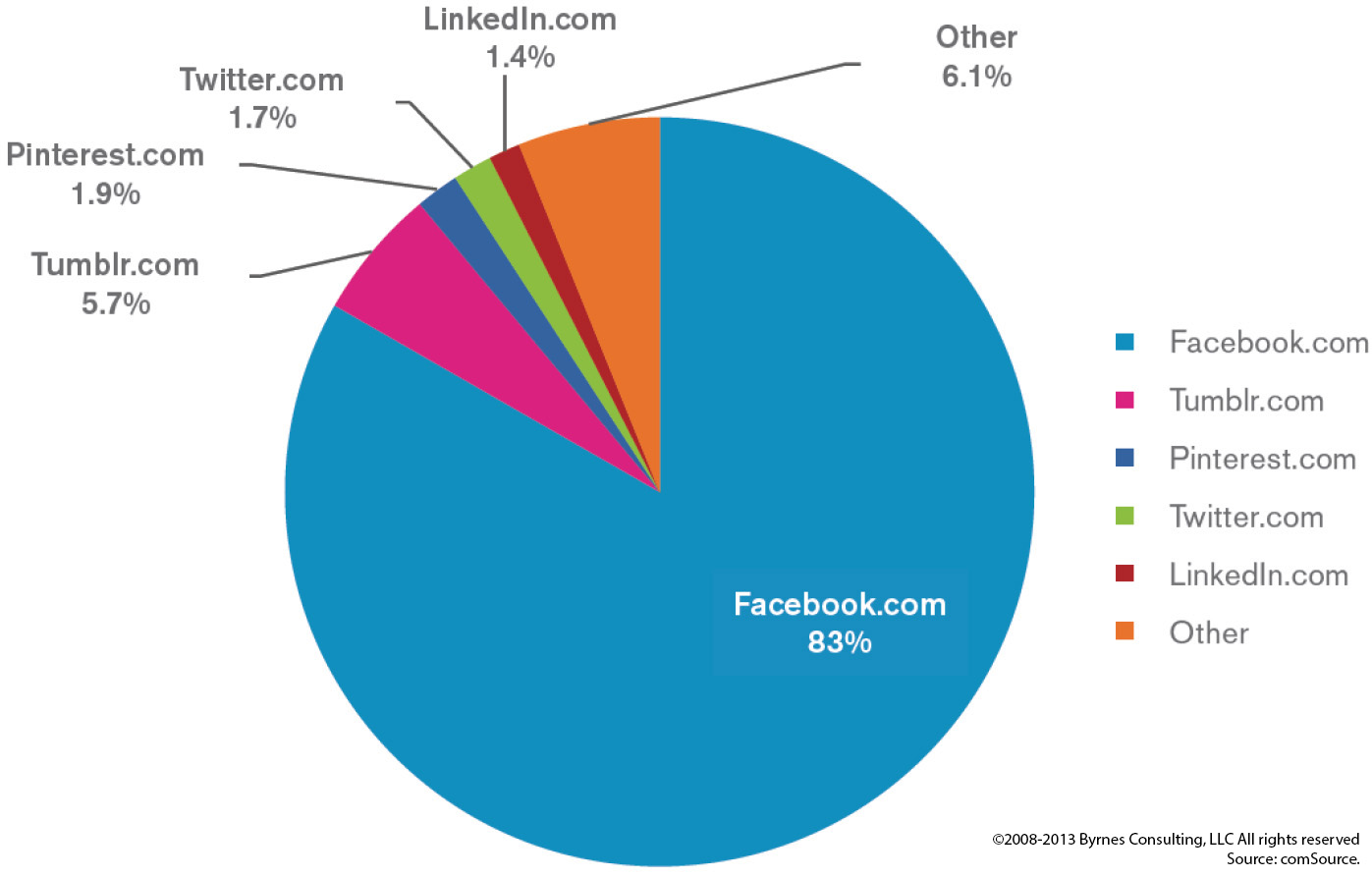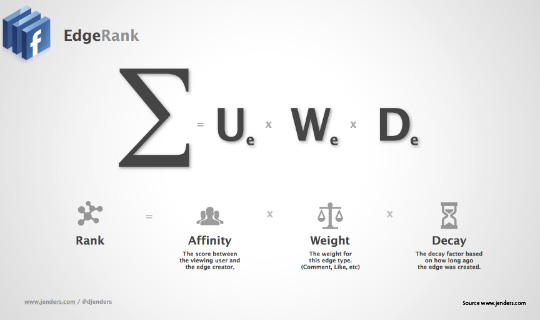In terms of nonprofit organizations and affiliated individuals, Facebook has been somewhat of an underused or misunderstood tool. However, when used correctly it can be an incredible resource. One of the keys to cultivating your audience on Facebook is understanding the Facebook algorithm.
The popularity of Facebook is very impressive. ESC consultant and social media expert Mike Byrnes recently spoke at an ESC social media workshop citing statistics such as:
- 1/7th of humanity is on Facebook
- More than half of the sharing on the internet is done on Facebook
- Facebook accounted for 5 out of every 6 minutes spent in the Social Networking Category
Share of Time Spent on Social Networks
The key to understanding how to capitalize on Facebook’s popularity to expand your reach comes down to understanding the Facebook algorithm. The Facebook algorithm consists of:
- Affinity – Your relationship and interactions with your followers
- Weight – The content of post, photos and photo albums have the most weight
- Time Decay – How long ago did you post or interact
All three contribute to your “rank.”
Affinity
Interaction is extremely important when building a Facebook presence. You do not want to simply put out a statement and walk away. Instead try to create engagement and interaction with your audience. This can be achieved by posting questions or calls to action, starting discussions, commenting on posts, “liking” comments on your posts, and sharing are all ways to increase your engagement and affinity with people. The more you increase your affinity the more likely you are to have a greater reach in the future.
Weight
On Facebook photos, photo albums, and videos carry the most weight. Photos are more likely to be “Liked”, shared, and commented on above all other content. This does not mean the best practice is to only post photos and videos, be sure there is a variety of content posted. It is also good to note that the weight component can overlap with the affinity component, for example comments on a post hold more weight than a “like” on a post.
Decay
This simply refers to how old your post is. The more you interact on social media platforms the more you extend your reach. However, this does not mean post anything and everything, instead be thoughtful about your posts. Remember to post what will engage your audience. While there are scheduling tools on Facebook, sometimes the real time posting has more traction and carries more weight.
Would your nonprofit benefit from a social media consulting project? Contact Ulea Lago, ESCNE Director of Consulting, at ulago@escne.org or call 617-357-5550 to find out how a consultant could help your eastern Massachusetts or Rhode Island nonprofit.




